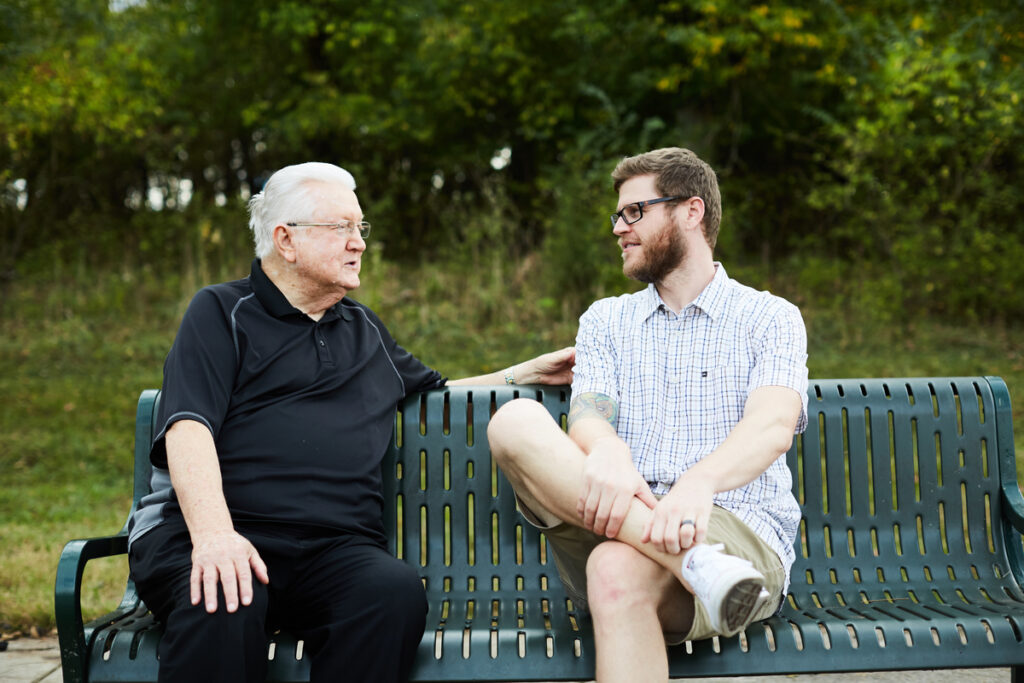By Michael Newton Keas
Because science is a core feature of modern society, everyone needs a thorough introduction to it. In particular, every high school student should know 1) what science is, 2) the various ways it is practiced, and 3) why it is important. The first topic is philosophical, the second is procedural and historical, and the third motivates students to study science.
What distinguishes science from other endeavors, such as religion, philosophy, or history? This question, as Stephen Meyer has shown (see his essay on the “demarcation problem” in The Creation Hypothesis), has no conclusive answer, partly because of the amazing variety of ways science is actually practiced. In most cases we simply recognize reputable science when we see it. Students should be challenged to define science and to recognize why this exercise in the philosophy of science is so difficult. In America, about forty state departments of education define science roughly as “investigating the natural world through the use of observation, experimentation, and logical argument.” (Jonathan Wells, “Definitions of Science in State Standards,” www.discovery.org/csc, November 2005). Only Massachusetts and Kansas have proposed restricting science by a definition that only allows unguided natural causes to explain what is observed. Students should know why this restriction is controversial.
Second, students must appreciate the variety of ways science is practiced, which I call methodological pluralism. Laboratory scientists actively manipulate conditions, following the standard experimental method. Astronomers often are restricted to passively peering into deep space where celestial objects are beyond their experimental control. Geologists study a single large object (Earth) through methods and natural laws largely borrowed from other scientific disciplines (especially physics and chemistry). Astronomers and geologists sometimes use simulation models to understand large-scale, long-term changes in the objects they study. Many physicists study tiny subatomic particles that present unique investigative challenges. The “scientific method” as presented in the introductory chapter of most science textbooks usually fails to recognize the methodological diversity of actual scientific practice (Henry H. Bauer, Scientific Literacy and the Myth of the Scientific Method, 1992).
Students should also recognize how different beliefs shape scientific practice. This is another form of methodological pluralism. For example, the ancient Babylonians produced the longest sustained scientific research program in human history (20 centuries). Although their motivation was based on religion and astrology, their resulting mathematical astronomy wielded great predictive power. Many celestial events could be predicted accurately in advance (Noel Swerdlow, The Babylonian Theory of the Planets, 1998). Students need to appreciate how various religious, anti-religious, and non-religious viewpoints have often motivated empirically successful science. The National Science Education Standards (https://www.nap.edu/readingroom/books/nses/6e.html, National Academy Press, 1996) affirm this approach: “Scientists are influenced by societal, cultural, and personal beliefs and ways of viewing the world. Science is not separate from society but rather science is a part of society.” Such an approach to science education would include discussion of the influence of naturalism in science. Naturalism in its philosophical form says that nothing beyond nature is real. This amounts to atheism. Naturalism in science has guided many scientists to limit themselves to material causes to explain the natural world. This is also called methodological naturalism. Students should be aware of these social influences on science and be encouraged to critically evaluate them.
Students further need to learn that science is devoted to two fundamentally distinct goals: “how things work” and “how things originated.” Each of these aims is achieved through a somewhat different collection of investigative tools. This too is methodological pluralism. The first concern, “how things work,” encompassed nearly all science until the early 19th century, when geology and biology acquired empirically rigorous tools for investigating “how things originated” (Martin Rudwick, Bursting the Limits of Time, 2005). Scientists who investigate “origins” study presently existing things and use this evidence to construct various competing hypotheses of how natural things might have originated. Geologists–in contrast to most ancient philosophers–largely concluded that Earth is not eternal, but had a beginning and changed through unique stages over time.
This view was partly motivated by the Judeo-Christian view of history with its notion of a unique beginning, unrepeatable development, and end (Rudwick, p. 7 and 642). Real historical development replaced the ancient Greek idea of endless cycles. Both sacred and secular viewpoints provided analogies that guided early attempts to reconstruct Earth’s history. For example, early geologists used fossils as markers of Earth’s historical record in much the same way as human artifacts, such as coins, were important chronological indicators in archaeology. Fossils were called “nature’s coins.” Such cultural legacies from the history of science deserve a place in science curricula. The retelling of the early 19th-century discovery of Earth’s history might help clear up the common misunderstanding that “science cannot include the study of past non-repeatable events in nature.” The earth and life sciences since the 19th century, and cosmology since the 20th century, have identified and explained many past events on the basis of currently existing evidence. While not as certain as repeatable laboratory experiments, these results are among the most remarkable achievements of modern science.
Third, we must convince students that science is important. Our understanding of “how things work” helps us to better manage Earth’s natural resources and to enhance human health. The scientific debate over the origin of the universe and life deserves special attention in science education because it affects the way we view life and human purpose. The breathtaking intricacy and complexity of even the simplest bacterial cell with its highly specified molecular machines should evoke awe among students. Some students may attribute this apparent design to autonomous nature (naturalism). Others may conclude that this points to a designer beyond the realm of nature. Yet others may respond in other ways. The science instructor should help students develop their own opinions in a manner that takes science (and other scholarship) seriously. Without this balance, science education reduces to propaganda.
One way to motivate students to study science and to think critically is to examine case studies of scientific controversy. Through case studies students will gain insight into the standard scientific procedure of inferring the best explanation from among multiple competing hypotheses. Charles Darwin argued, “a fair result can be obtained only by fully stating and balancing the facts and arguments on both sides of each question” (Origin of Species, p. 2). In today’s climate of public educational policy, this would mean, at a minimum, teaching not just the strengths of Darwin’s theory, but also the evidence that challenges it. For example, any complete theory of biological origins must examine fossil evidence. The fossils of the “Cambrian explosion” show virtually all the basic forms of animal life appearing suddenly without clear precursors. It is not merely the geologically sudden appearance that is notable, but the observation that major categories (animal phyla) appear before the multiplication of small differences among species. Darwin’s theory predicts the opposite: small differences multiplying, and by means of natural selection, later giving rise to major anatomical differences. Students ought to know about this evidential challenge to Darwinism, but few biology textbooks mention it.
Consider another example. Many biology texts tell about the Galapagos finches whose beaks have varied in shape and size over time. They also recall how some bacteria have acquired resistance to certain antibiotics. Such episodes are presented as conclusive evidence for evolution. And indeed they are, depending on how one defines evolution (Stephen Meyer and Michael Keas, “The Meanings of Evolution,” in Darwinism, Design, and Public Education, 2003). Yet few biology textbooks distinguish the different meanings associated with “evolution”- a term that can refer to anything from trivial change to the creation of life by strictly mindless, material forces. Nor do they explain that the processes responsible for cyclical variations in beak size do not explain where birds or biologists came from in the first place. As a host of distinguished biologists (e.g. Stuart Kauffman, Rudolf Raff, and George Miklos) have explained in recent technical papers, small-scale “microevolutionary” change cannot be extrapolated to explain large-scale “macroevolutionary” innovation. Microevolutionary changes (such as variation in beak shape) merely utilize or express existing genetic information; the large-scale macroevolutionary change necessary to assemble new organs or body plans requires the creation of entirely new genetic information. Leading evolutionary biologists know that this distinction poses serious difficulties for modern Darwinism. Students should too.
A “teach the controversy” approach presents biology in a livelier and less dogmatic way. Students will learn science as it is actually practiced. Scientists often debate how to best interpret data and they even argue over what counts as legitimate “scientific explanation.” Controversy is normal within science (not just an intrusion). Students will learn to distinguish better between evidence (factual data) and inference (reasoning to conclusions). Students need these skills as citizens, whether they choose careers in science or other fields. Teaching multiple sides in an “issues approach” to science has, of late, been recognized as a superior educational approach, not just in origins issues, but also in other areas. The recent scientific debate over Darwinism and intelligent design theory is of great interest to students who care about the big questions of life. Research based on design theory shows great promise of producing profound results in the near future. To the degree to which it succeeds, the science education community will have increasingly stronger reasons to incorporate this theory into the teaching of science.
Advocates of the Darwin-only approach to education in the life sciences often point to the National Science Education Standards (NSES) to bolster their position. The NSES constitute the premier non-compulsory national document that currently is guiding much reform in science education in the United States. Ironically, statements in the NSES support the major points in this essay. The NSES call upon students to “identify their assumptions, use critical and logical thinking, and consider alternative explanations” (https://www.nap.edu/readingroom/books/nses/overview.html). If students are simply told to swallow Darwin whole as a “fact,” how will this help them to become critical, skeptical, scientific thinkers? Among the content standards for grades 9 through 12 is the aim that all students should develop an understanding of biological evolution. We enthusiastically affirm this goal. In fact, we want students to learn more about Darwinism than most Darwin-only advocates wish. The “more” we have in mind includes the weaknesses of Darwin’s theory (not just a selective presentation of its strengths). Microevolutionary speciation is well established, and is a tribute to the permanent legacy of Darwin’s contribution to human knowledge. Macroevolution is another matter. Experts disagree and students should not be sheltered from this dispute.
The NSES advocate the use of “history to elaborate various aspects of scientific inquiry, the nature of science, and science in different historical and cultural perspectives” (https://www.nap.edu/readingroom/books/nses/6e.html). In other words, the history of science can be deployed in the science curriculum to help students know what science is, the various ways it is practiced, and why it is important to the rest of human experience.
Published March 30, 2016




